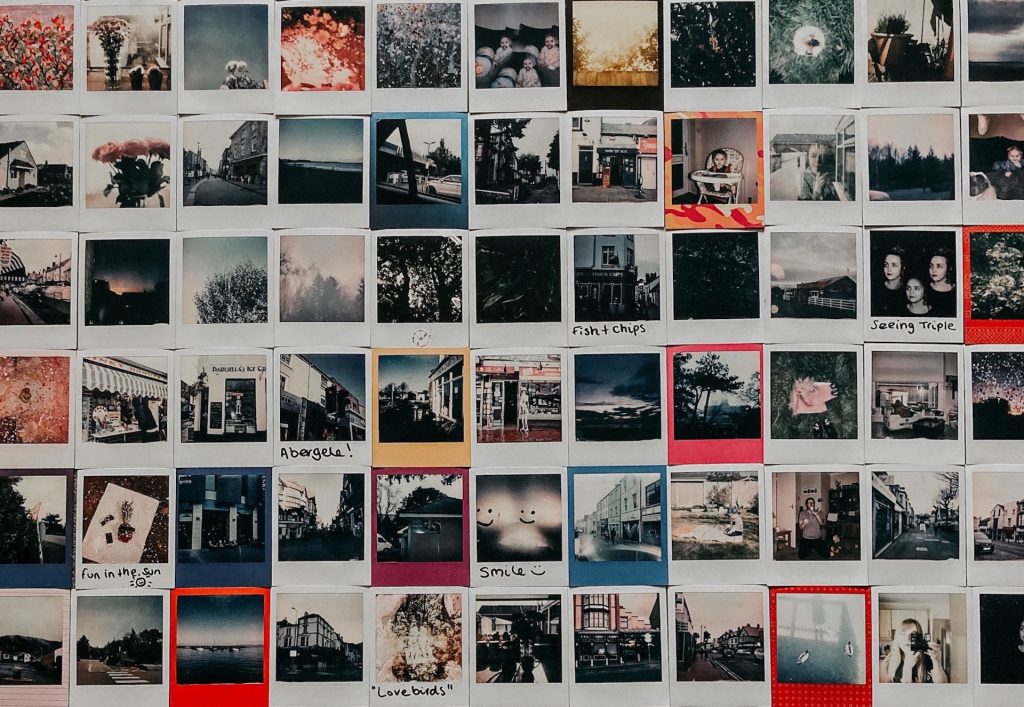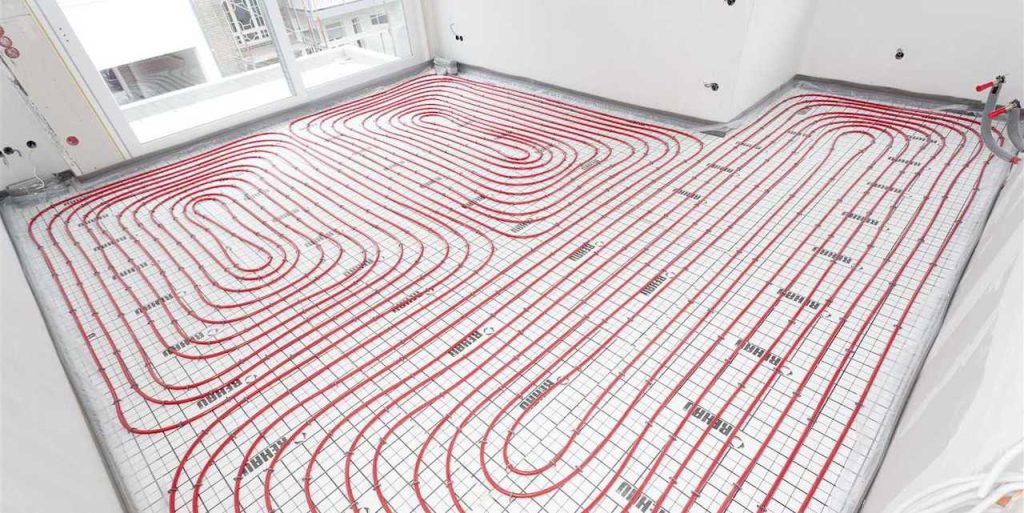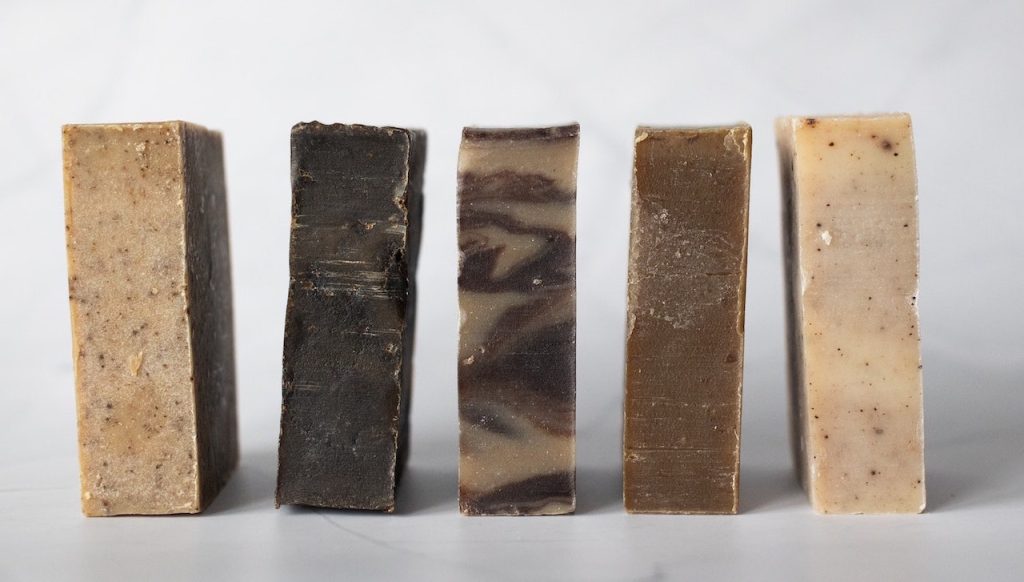Johnny Nash wrote “I Can See Clearly Now” with the wonderful phrase “It’s gonna be a bright sunshiny day”. And what better way to see a bright sunny horizon than with a pair of binoculars.
In this post we are going to look at binoculars, which Wikipedia tells are two refracting telescopes mounted side-by-side and aligned to point in the same direction, allowing the viewer to use both eyes (binocular vision) when viewing distant objects.
Hand-held binoculars range from small opera glasses, used in theatres, to glasses with 7 to 12 times magnification and 30 to 50 mm diameter objectives for typical outdoor use.
The amazing thing is that without any intent or effort, we often end up with several pairs of binoculars hidden away in draws or pushed to the back of top shelves. Most, unused and unwanted.
A little pinch of history
Hans Lipperhay (ca. 1570-1619) of the Netherlands is credited with inventing the telescope in 1608. He was the first person to lodge a patent application, which was followed a week later with a request from the examining committee “to ascertain … whether he could improve it so that one could look through it with both eyes”. Within several months, Lipperhay constructed and demonstrated this first pair of binoculars.
The development of telescopes progressed quickly, but binoculars involved significant engineering challenges in the requirements that the optical axes of the two telescopes be parallel or collimated and that the two magnifications must be matched. The ability to adjust the inter-pupillary separation to match that of the user was another important design feature.
Following the demonstration of the Galilean or Dutch form of the telescope (a positive focal length objective lens with a negative focal length eye lens) in 1608, the telescope evolved rapidly. The first Keplerian telescope was constructed by Christoph Scheiner in 1617.
In 1645 Anton Maria Schyrle de Rheita produced a practical terrestrial telescope with an erect image and acceptable magnification and field of view. And in 1662 Christian Huygens developed what is now called the Huygenian eyepiece, a telescope with two lenses to diminish the amount of dispersion.
Image quality was a major problem with early telescopes. Because of the colour dispersion (chromatic aberration) of the glass in a simple objective lens, different wavelengths have different focal lengths and are brought to focus at different distances. The longitudinal blur associated with chromatic aberration was believed to be a physical limitation and could not be corrected. However Peter Dollond did successfully designed and manufactured a number of optical instruments, and he is credited with the invention of the triple achromatic lens, which limit the effects of chromatic and spherical aberration.
There were other practical considerations, including the need to have draw tubes that slid easily allows the telescope to focus and yet collapse into the main barrel to produce a more compact package. They had to also maintain the alignment of the optics along the optical axis of the telescope. We would have to wait for the Industrial Revolution (ca. 1750) to see brass tubes being used in single draw telescopes.
By the early 1700s, small Galilean telescopes, usually called spyglasses, prospect glasses, or opera telescopes, had become common (the early monocular). Initially, these handheld telescopes had a single draw, a small field of viewing a magnifying power of time 2 or 3.
Early attempts to create binoculars using a pair of Galilean or Dutch telescopes date back to Lipperhey in 1608. But the difficulties of alignment, and matching focus and magnification made reproducible manufacturing almost impossible. It was not until the early 1800s that Galilean binoculars were produced.
A major advance occurred in 1823 when Johann Friedrich Voigtländer patented the combination of two achromatic opera telescopes or spyglasses into a pair of opera glasses by using a frame with two bridges. Later a certain J. P. Lemiére of Paris improved upon this design by adding a third bridge between the two eye tubes, so that the focusing of the two telescopes was coupled. Then came the idea to focus by turning one of the barrels to drive the motion of both eye draws. A later approach used a central focusing knob with a threaded screw. In early implementations, the bridges run straight between the two telescopes. Later, the bridges were curved to allow “nose room” and provide user comfort. This basic design of opera glasses remains in use today.
The article of Greivenkamp and Steed is a fantastic introduction to both telescopes and binoculars.
Opera glasses
Opera glasses are the oldest and simplest working telescope type viewing tool. They are fine for low magnification, but not at higher magnifications such as needed for bird watching.
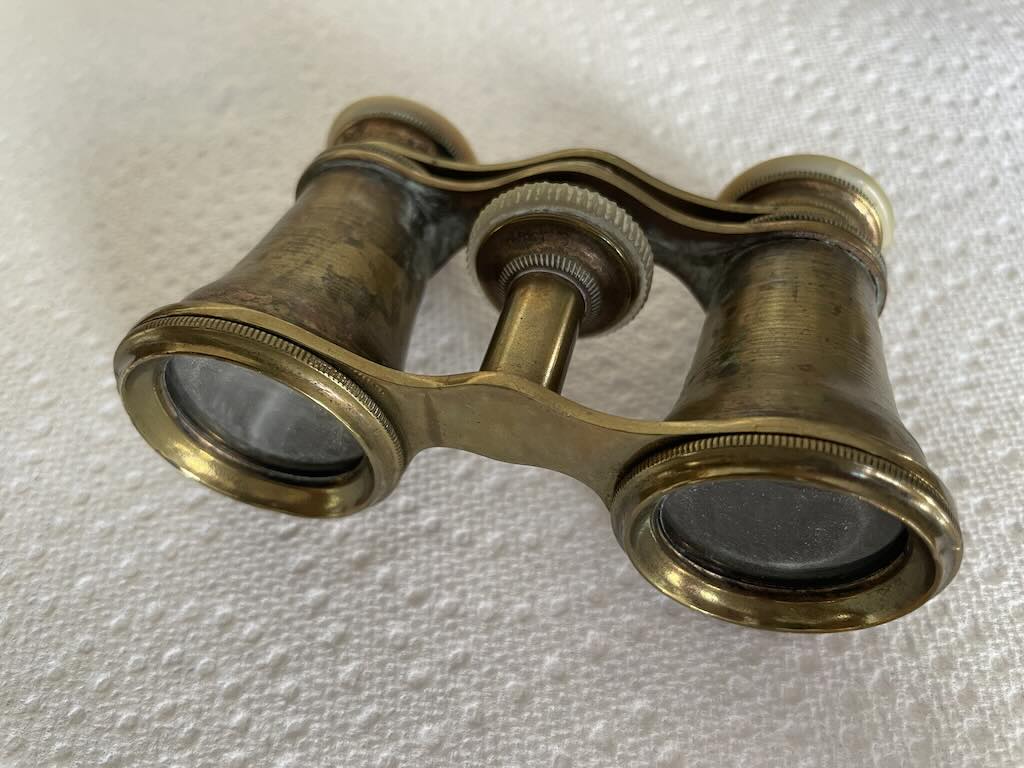
Above we have a pair of unsigned brass opera glasses. They appear to have lost their decoration, which might have been leather or something like a faux skin of some sort. Perhaps the only unusual part are the eye cups (part of the oculars) which appear to be in mother of pearl.
Another differentiating feature is the shape of “bell” or body of the each objective. In most cases it’s called a “bell” because it is shaped a bit like a bell, but here is more like a wind-funnel shape.
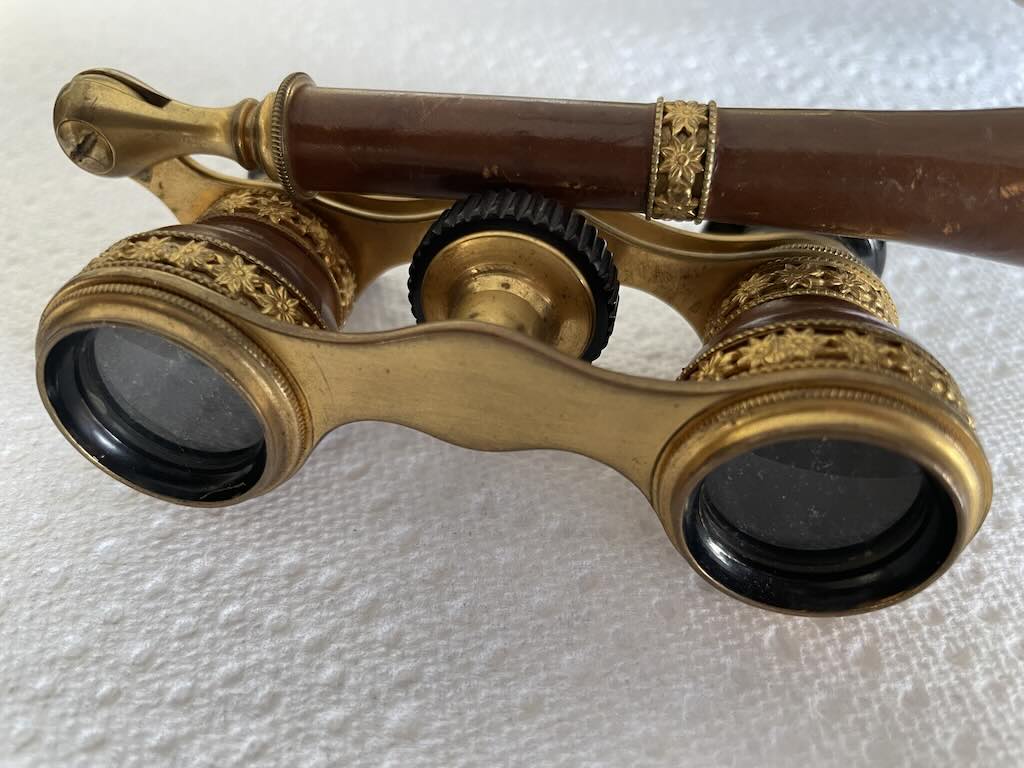
This second set is again unsigned, but appears to be more decorative with leather and golden brass. They have a handle, but one that is not telescopic (those with telescopic handles are called “lorgnette“). I’ve seen this type of more ornate decoration on other opera glasses.
Both of these examples are unsigned, and as such would probably sell for 10€ to perhaps 20€. However, signed opera glasses in good condition, decorative, and with their case could sell for up to 100€ (although asking prices can be much higher).
Japanese WWII Type 93 Non-Commissioned Officer's 4x10 Binoculars
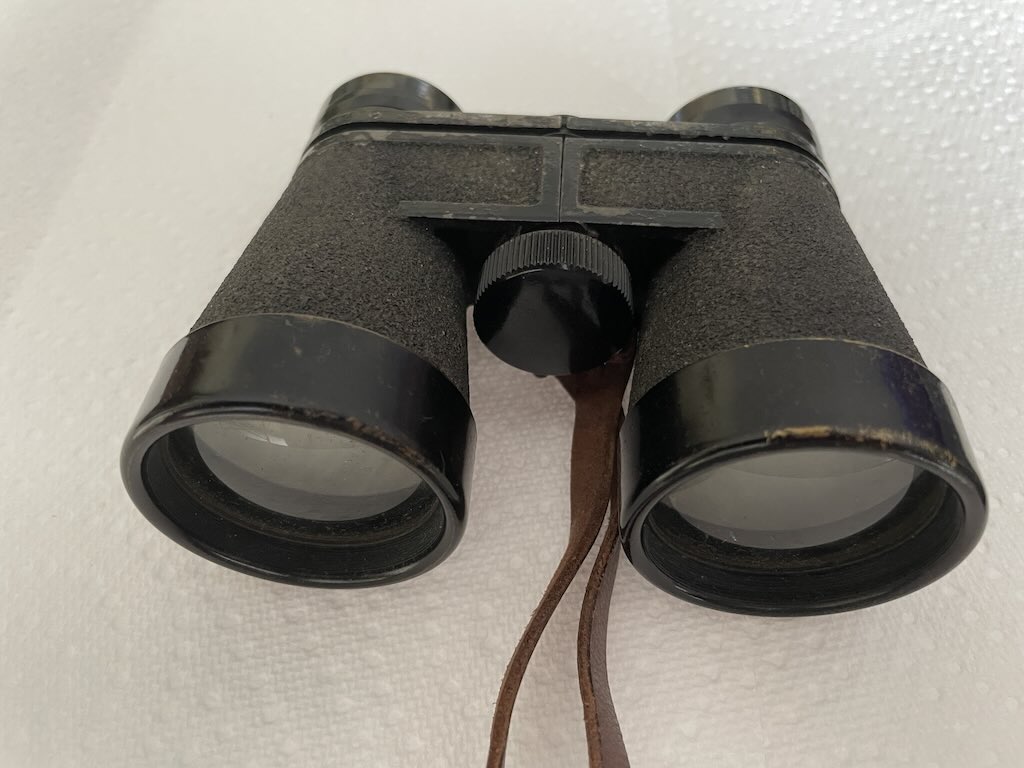
Here we have an unusual pair of binoculars, no doubt belonging to my wife’s farther.
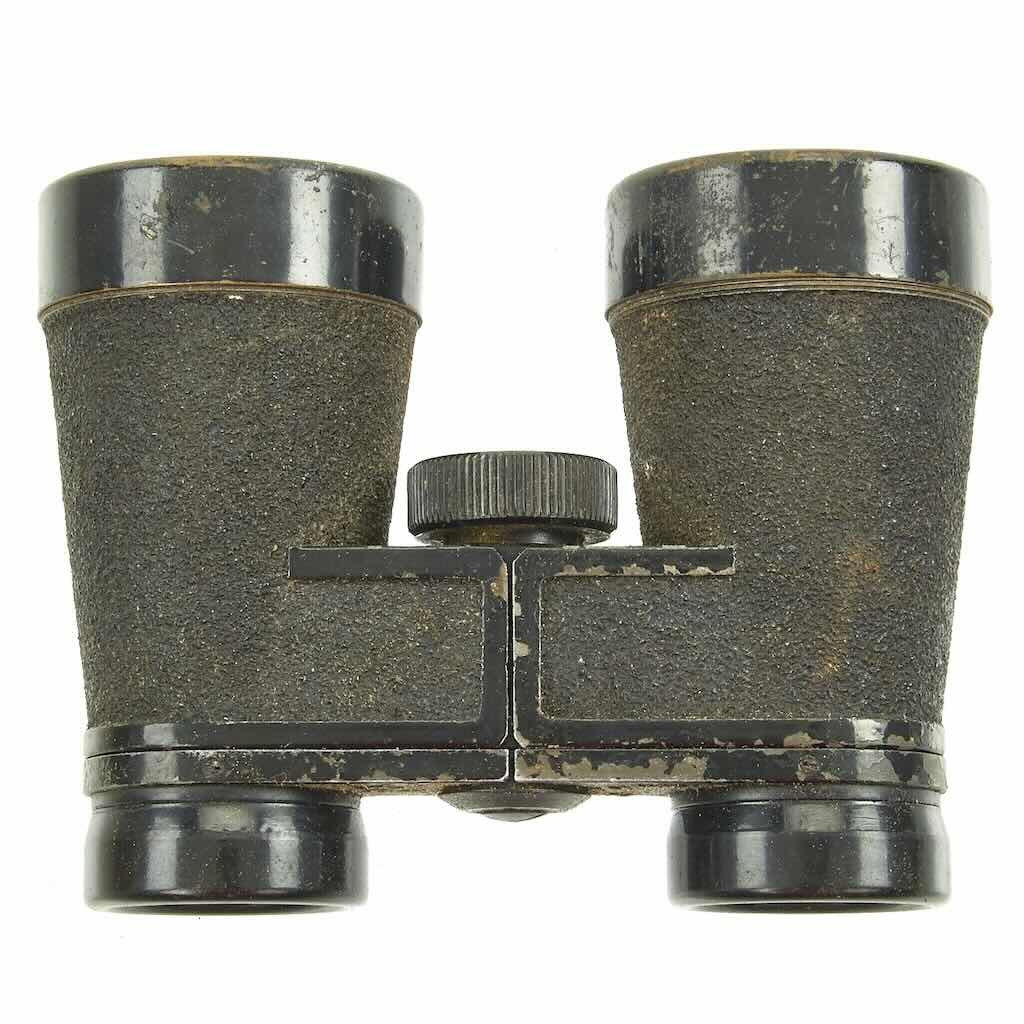
These are a pair of Japanese WWII Non-Commissioned Officer’s (NCO) Type 93 binocular field glasses. Known in Japanese as the 93式双眼鏡 (93-Shiki sōgankyō), these were intended as a smaller more lightweight version of binocular field glasses that could be used by NCO’s in the field.
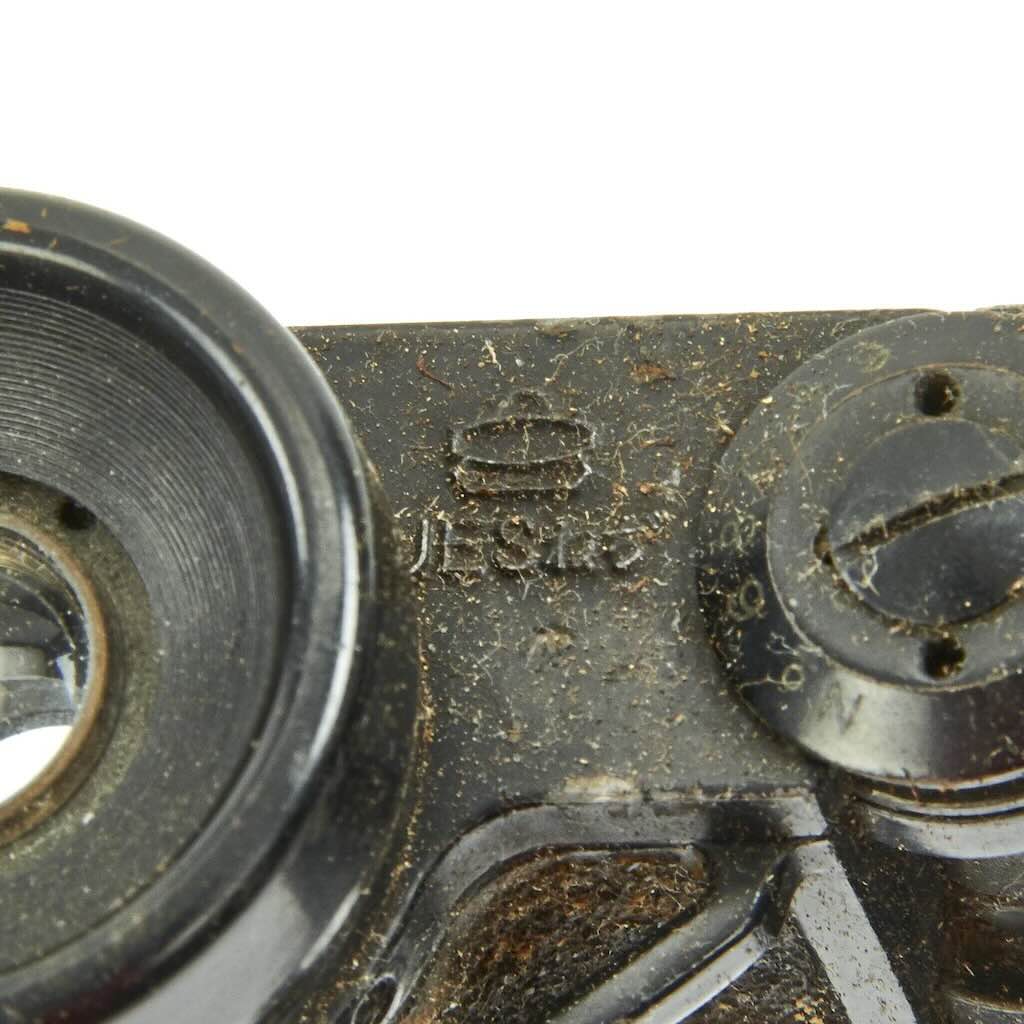
Field glasses have no internal prisms that can be knocked out of alignment so their main advantage is that they are durable, making them a good choice for combat operations. These binoculars are marked with magnification factor 4×10°. They also have a small JESねぢ mark, which means that it was made under “Japanese Engineering Standards”. They also have serial No. 86923 on the centre pivot. The binoculars are in good shape, though the right eyepiece has a crack. There is also a reticule in that side.
A different reference indicated that the Japanese developed the Type 93 Galilean/non-prismatic binoculars for issue to non-commissioned officers during their 1930’s Manchurian conflict. It had a right side ranging grid.
The story goes that during the 1930s Japan was fighting a war in Manchuria, and the Japanese Imperial Army decided to equip all enlisted officers with binoculars. Because the expense was too great for a prismatic binocular the army settled on the Galilean 4X model. It was used as a rangefinder and fire control binocular using a unique concept. The right eyepiece was equipped with a half-lens attached to the inner surface of the eyelens. The reticle was engraved on the inner side of the objective. By looking through the special eyepiece a range could be taken. This is the only Galilean binocular to have such an attribute, although using this Galilean style sacrificed power and a large field of view. This binocular was a cost effective method of equipping the large Imperial Army with useful technology. It’s been stated that the binoculars were made by Nikko (Nikon), and they were the only ones to add a reticule.
More specifically I’ve also read that JESねぢ refers to a standard type of engineering screw and by extension, the machines it was fabricated with (I guess this must refer to the screw used for focusing).
The binoculars still have their original carry strap, and they came in a simple green canvas pouch.
A good pair of these binoculars with their original case can auction for about €350.
Pentax Papilio 85x21
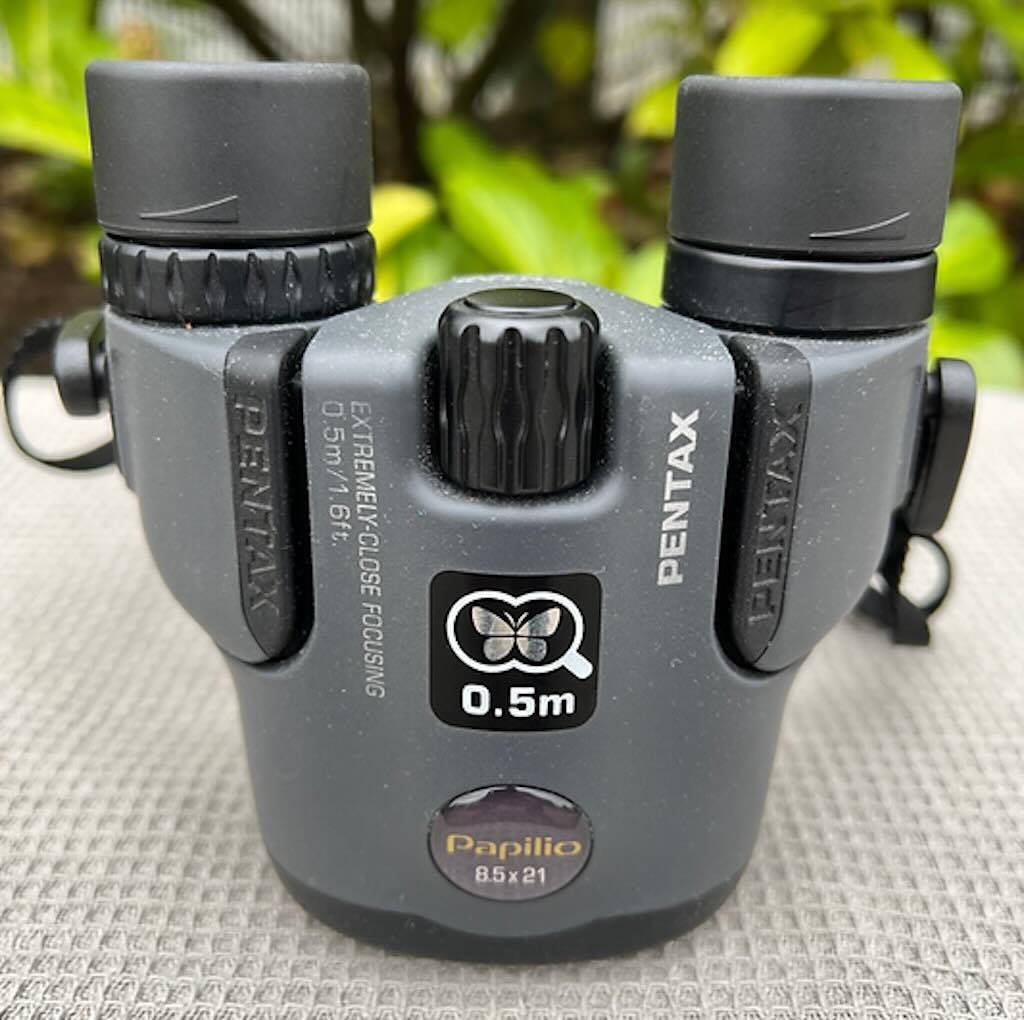
Some years ago my wife Monique insisted we buy a pair of binoculars to leave in the car. I picked the Pentax Papilio 85×21. These have very specific characteristics, and its (the new Papilio II) still almost unchallenged in the close-up category. One of the most compelling reasons for picking these binoculars was the 50 cm close focus distance. Which means that they can also be used in the garden, or even whilst visiting a church or museum. Some people have called it a “field microscope”.
Here is a recent review of the Papilio II dated from 2020, which shows that the model remains very competitive.
Coming back to why I bought that model. It’s small and lightweight, which for my wife was important. And the close focus feature was completely new to us both, and we found it quite compelling. Mostly we used these binoculars when in the mountains.
Nikon Prostaff P3 8x42
Everyone will also have binoculars, but what’s the best ones to have on an Antarctic cruise?
I carry a pair of Pentax Papilio 8.5×21 in the car, but are they the right ones for a trip to the Antarctic? Firstly are they fog and waterproof (or at least water resistant)? Can the focus wheel be used with gloves? Can they be used with sun glasses? What magnification, and what weight? And what are the alternatives, remembering that prices for a pair of binoculars can range from $150 to $3,000.
Firstly we can eliminate my Pentax binoculars because they are more suited to observing insects, flowers and objects in museums, and not distant penguins on snow. These are great when you know what you want to look at, and it’s not that far away. And this is evidenced in the 8.5×21, which means a good magnification of 8.5 but objective lens diameter of only 21 mm. So they are not that good for scanning a scene some distance away, and furthermore they don’t capture that much light from distant objects.
I also have a pair of Nikon Prostaff P3 8×42. So again these have the same magnification as the Papilio. An interesting way to consider magnification is that x8 means that something at 80 metres will appear as if it were at 10 metres when viewed with the naked eye. The big difference is in the objective lens diameter (42 as compared to 21), which is all about capturing more light, but it also makes these binoculars heavier.
As far as I can tell, most experts suggest that a good pair of 8×42 or 10×42 will be the best for an Antarctic cruise, with the additional criteria that they are easy to use with gloves. So the Prostaff P3 is a solid choice, good magnification and field of view, easy to grip and use, waterproof, and not too expensive.
References
John E. Greivenkamp and David L. Steed, “The History of Telescopes and Binoculars: An Engineering Perspective“
Garrett P. Serviss “Astronomy with an Opera-glass“







